The quadriceps femoris, usually merely known as the quads, are some of the highly effective and important muscle teams within the human physique. The time period quadriceps femoris interprets to “four-headed muscle of the femur”. This group includes 4 particular person muscle tissues positioned on the entrance of the thigh, all of which converge right into a single quadriceps tendon that inserts into the patella (kneecap).
Although historically categorised as a four-headed muscle group, current anatomical analysis helps the inclusion of a fifth construction—the Tensor of the Vastus Intermedius (TVI)—suggesting higher complexity within the quadriceps’ function in motion and stability. (1,2,3)
These muscle tissues are:
- Rectus Femoris
- Vastus Intermedius
- Vastus Lateralis
- Vastus Medialis
- Tensor Vastus Intermedius
Collectively, the quads play a main function in knee extension, hip flexion, and stabilizing the patella throughout motion.
Anatomy of the Quadriceps Muscle groups
1. Rectus Femoris
- Location: Center of the thigh, superficial muscle
- Origin: Anterior inferior iliac backbone (AIIS)
- Insertion: Patella through quadriceps tendon
- Perform: Extends the knee and flexes the hip (solely quad muscle that crosses each joints)
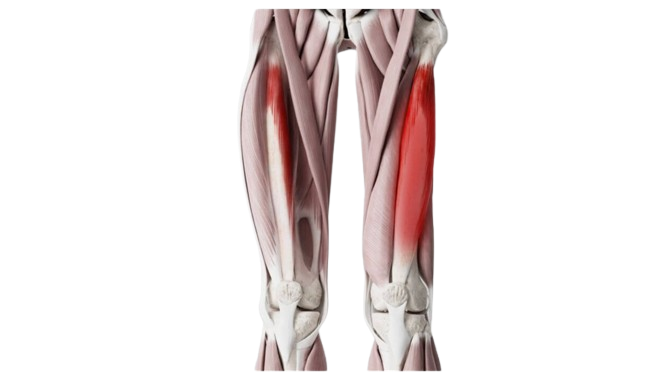
2. Vastus Intermedius
- Location: Deep to rectus femoris, between vastus lateralis and medialis
- Origin: Anterior and lateral surfaces of the femoral shaft
- Insertion: Patellar tendon
- Perform: Purely assists in knee extension
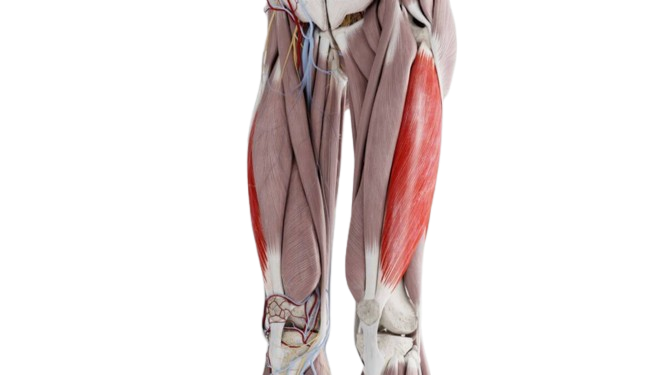
3. Vastus Lateralis
- Location: Deep to rectus femoris, between vastus lateralis and medialis
- Origin: Anterior and lateral surfaces of the femoral shaft
- Insertion: Patellar tendon
- Perform: Purely assists in knee extension
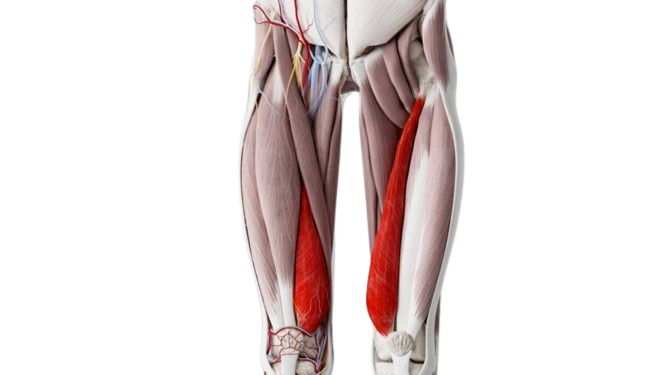
4. Vastus Medialis
- Location: Internal (medial) thigh
- Origin: Linea aspera of the femur
- Insertion: Patellar tendon
- Perform: Extends the knee; VMO (Vastus Medialis Indirect) performs a important function in patellar stabilization
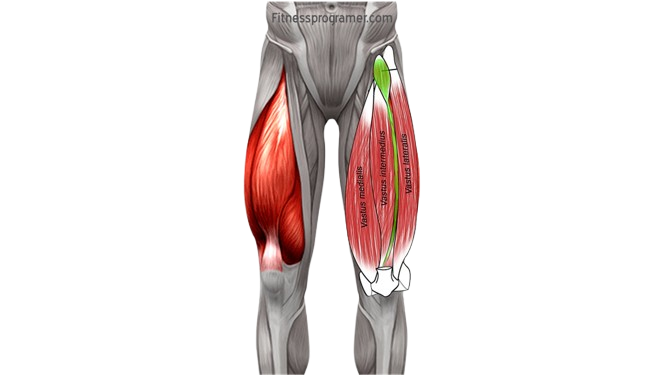
5. Tensor Vastus Intermedius
- Location: Between vastus intermedius and vastus lateralis
- Origin: Originates from the anteroinferior higher trochanter
- Insertion: Patellar tendon
- Perform: Extra research are awaited to grasp its precise function in perform.
Distinct Options: The muscle stomach is comparatively brief and offers rise to an extended, skinny tendon that descends medially and superficially alongside the floor of the vastus intermedius.
Features of the Quadriceps Muscle Group
Major Perform:
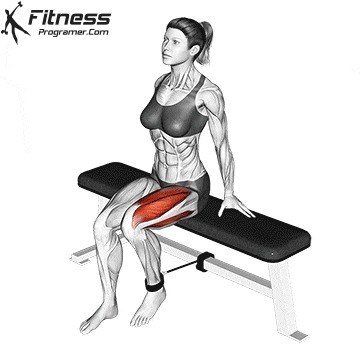
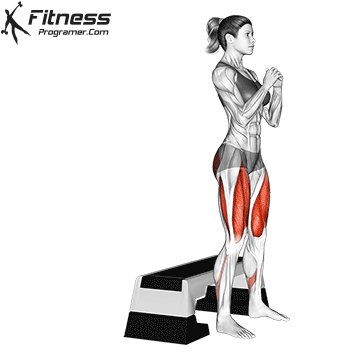
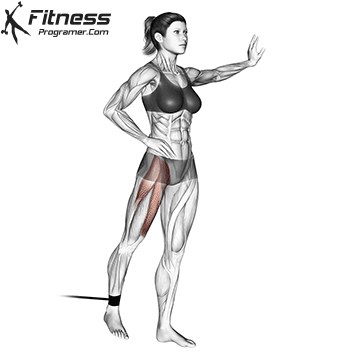
- Knee Extension: Straightening the leg from a bent place (e.g., standing up, kicking, squatting)
- Hip Flexion: (Rectus femoris solely) helps carry the thigh ahead
- Stabilization: The quadriceps present stability to the knee joint, particularly throughout weight-bearing actions, comparable to standing, strolling, and operating.
- Energy and Power Manufacturing: These muscle tissues are important for producing energy and power throughout actions like leaping, sprinting, and lifting heavy weights, making them important for athletic efficiency and power coaching.
Muscle Stability with the Hamstrings
The quadriceps perform in coordination with the hamstring muscle tissues, that are positioned on the again of the thigh. These two teams type an agonist-antagonist pair on the knee joint. When the quadriceps contract to increase the knee, the hamstrings calm down. Conversely, throughout knee flexion, the hamstrings contract whereas the quadriceps lengthen. This dynamic stability ensures easy, managed leg motion and helps shield the knee from extreme pressure throughout movement.
Practice the Quadriceps Successfully
To develop power and hypertrophy within the quadriceps, you must incorporate workouts that emphasize knee extension and hip flexion beneath load.
High Compound Workouts:
High Isolation Workouts:
Quantity and Depth Tips
Coaching Variables
| Aim | Reps | Units | Depth | Relaxation |
|---|---|---|---|---|
| Hypertrophy | 8–12 | 3–5 | 65–80% 1RM | 30–90 sec |
| Power | 3–6 | 3–4 | 80–90% 1RM | 2–3 min |
| Endurance | 15–20+ | 2–3 | <60% 1RM | <30 sec |
Coaching Ideas:
- Use managed tempo, particularly throughout eccentric (reducing) part
- Emphasize full vary of movement
- Guarantee knee alignment with toes to stop joint pressure
- Fluctuate foot place and stance width to focus on totally different elements of the quads
Muscle Activation Issues
- Slender stance squats emphasize the rectus femoris
- Extensive stance targets adductors and vastus medialis
- Tempo-controlled eccentric phases improve time beneath rigidity, enhancing hypertrophic response
Quadriceps and Athletic Efficiency
Robust, balanced quads are essential in sports activities and day by day actions:
- Working & Sprinting: Quad energy contributes to stride and knee drive
- Leaping & Touchdown: Eccentric quad power is important for shock absorption
- Biking: Quadriceps generate a lot of the downward power on the pedal
- Knee Stability: Quads shield ligaments (ACL, MCL) throughout directional adjustments
Damage Prevention and Frequent Imbalances
Frequent Accidents:
- Quad Strains: Overuse or overstretching
- Patellofemoral Ache Syndrome (Runner’s Knee): Usually brought on by VMO weak spot or imbalanced monitoring
- Tendonitis (Jumper’s Knee): Overload of the patellar tendon
- Quadriceps Tendon Rupture: Uncommon however severe damage in older adults
Prevention Ideas:
- Strengthen each quads and hamstrings
- Embrace mobility work (hip and ankle)
- Embrace eccentric loading workouts
- Heat up completely earlier than quad-intensive exercises
- Steadily improve depth and keep away from sudden coaching spikes
- Use foam rolling and stretching to scale back fascial adhesions
Key Takeaways: Why the Quadriceps Matter
- The quads are important for motion, posture, and joint stability
- They encompass 4 (+1) synergistic muscle tissues that work collectively for knee extension
- Balanced coaching prevents damage and enhances sports activities efficiency
- Understanding the anatomy helps you goal weaknesses and imbalances
- Correct strengthening results in higher mobility, perform, and physique
References
- Anatomy, Morphology and Perform of the Tensor of Vastus Intermedius: A Systematic Evaluation. Learn the research
- Behnke, R. S. (2012). Kinetic Anatomy (third ed.). Human Kinetics.
- Schoenfeld, B. J. (2010). The Mechanisms of Muscle Hypertrophy and Their Utility to Resistance Coaching. Journal of Power and Conditioning Analysis, 24(10), 2857–2872. Learn the research
- Grelsamer, R. P., & Weinstein, C. H. (2001). Patellar monitoring: a evaluate of the literature. The American Journal of Sports activities Drugs, 29(6), 836-839. Learn the research


